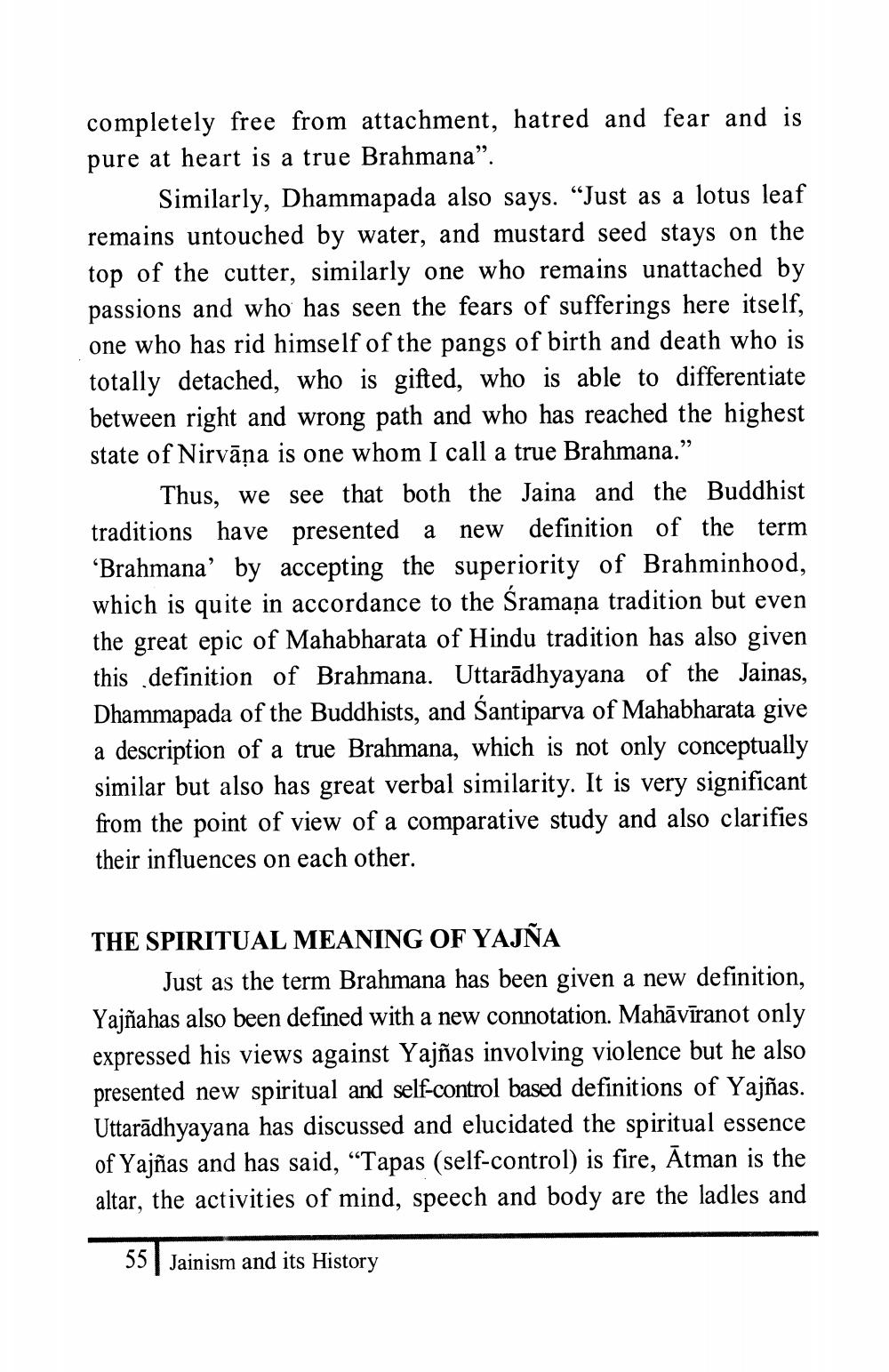________________
completely free from attachment, hatred and fear and is pure at heart is a true Brahmana”.
Similarly, Dhammapada also says. “Just as a lotus leaf remains untouched by water, and mustard seed stays on the top of the cutter, similarly one who remains unattached by passions and who has seen the fears of sufferings here itself, one who has rid himself of the pangs of birth and death who is totally detached, who is gifted, who is able to differentiate between right and wrong path and who has reached the highest state of Nirvāṇa is one whom I call a true Brahmana.”
Thus, we see that both the Jaina and the Buddhist traditions have presented a new definition of the term ‘Brahmana' by accepting the superiority of Brahminhood, which is quite in accordance to the Śramaņa tradition but even the great epic of Mahabharata of Hindu tradition has also given this definition of Brahmana. Uttarādhyayana of the Jainas, Dhammapada of the Buddhists, and Santiparva of Mahabharata give a description of a true Brahmana, which is not only conceptually similar but also has great verbal similarity. It is very significant from the point of view of a comparative study and also clarifies their influences on each other.
THE SPIRITUAL MEANING OF YAJÑA
Just as the term Brahmana has been given a new definition, Yajñahas also been defined with a new connotation. Mahāvīranot only expressed his views against Yajñas involving violence but he also presented new spiritual and self-control based definitions of Yajñas. Uttarādhyayana has discussed and elucidated the spiritual essence of Yajñas and has said, “Tapas (self-control) is fire, Ātman is the altar, the activities of mind, speech and body are the ladles and
55
Jainism and its History




